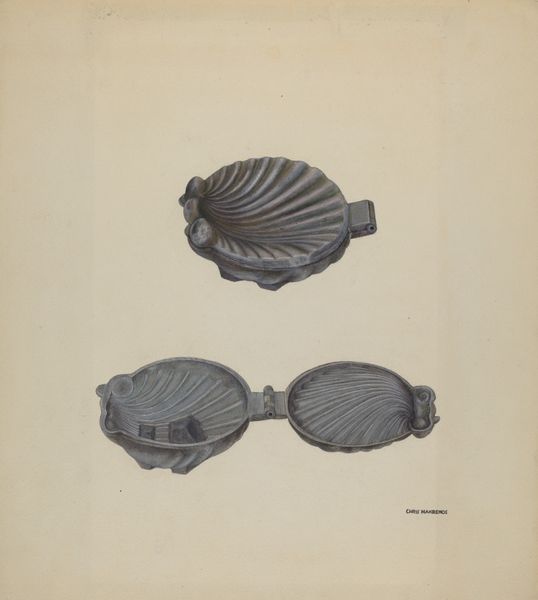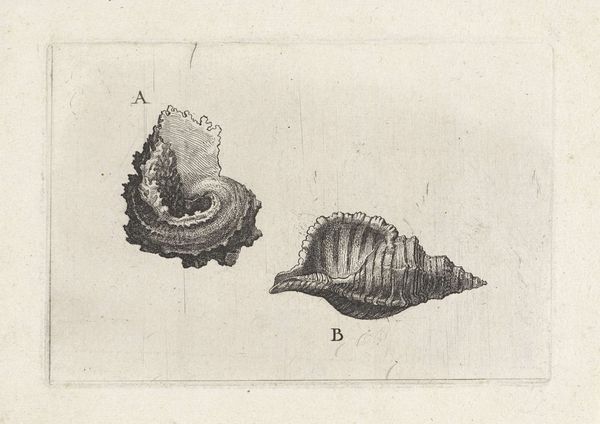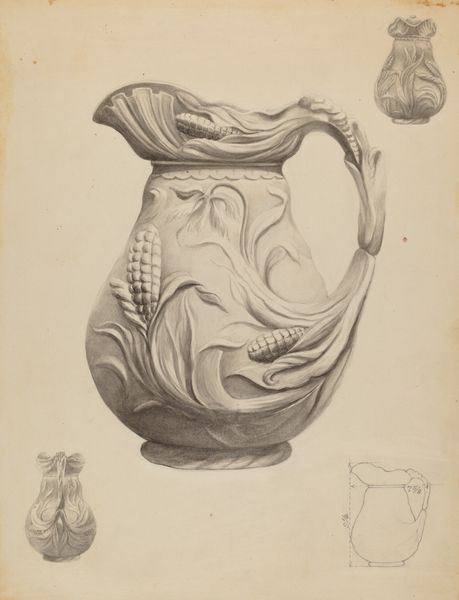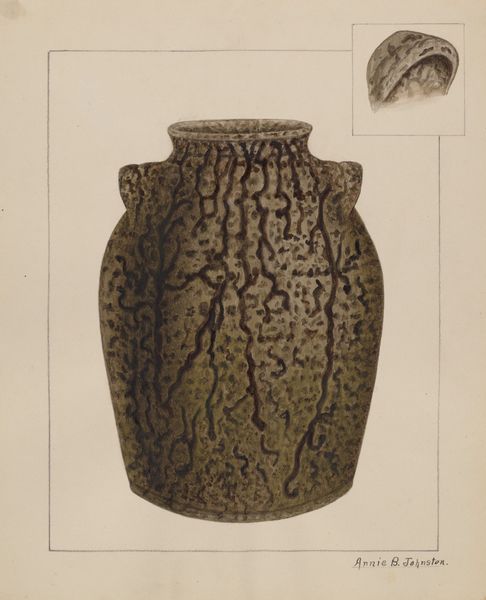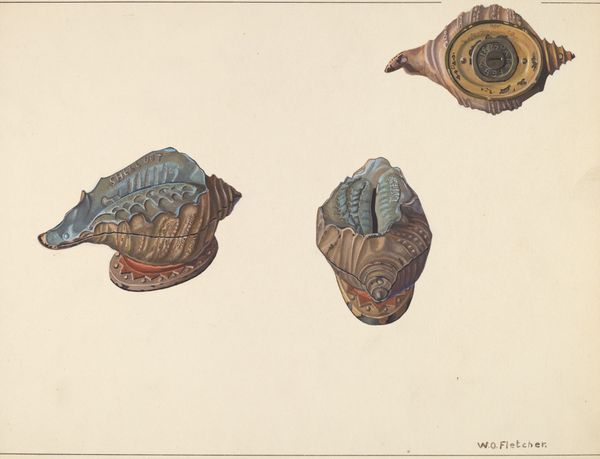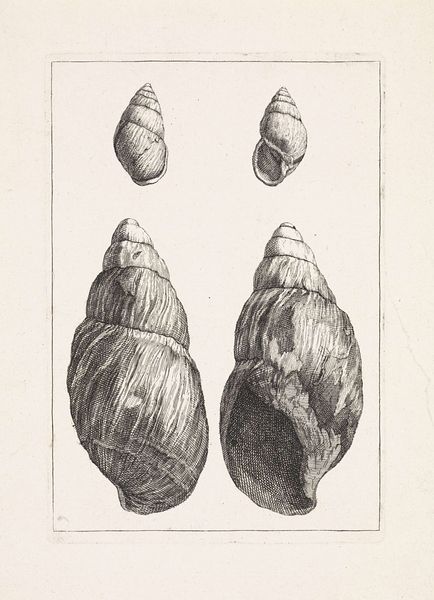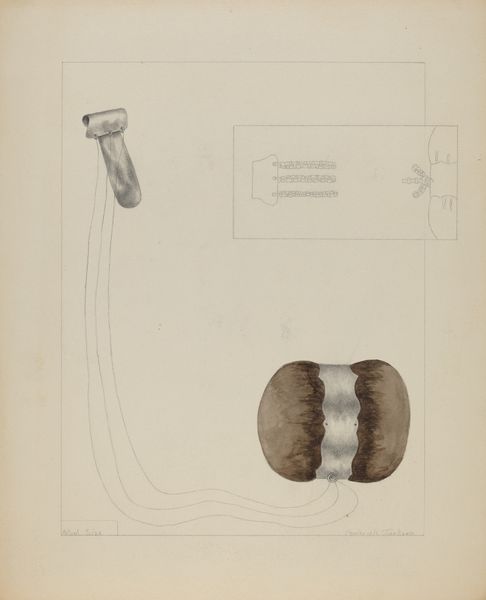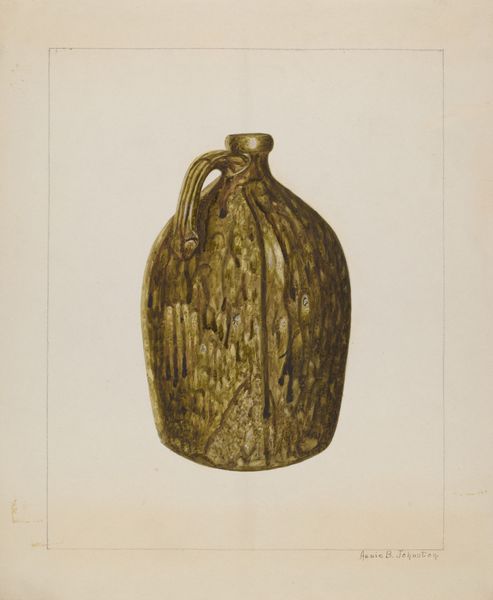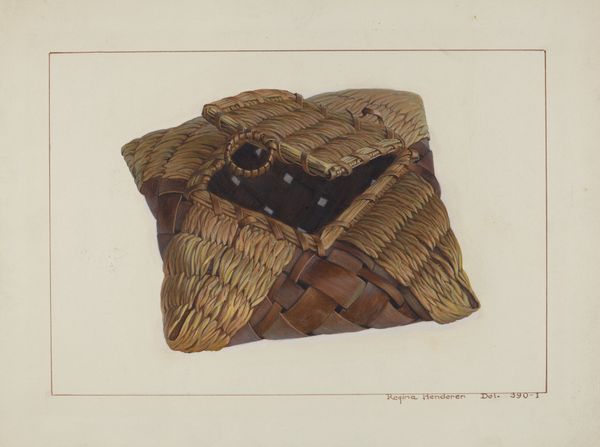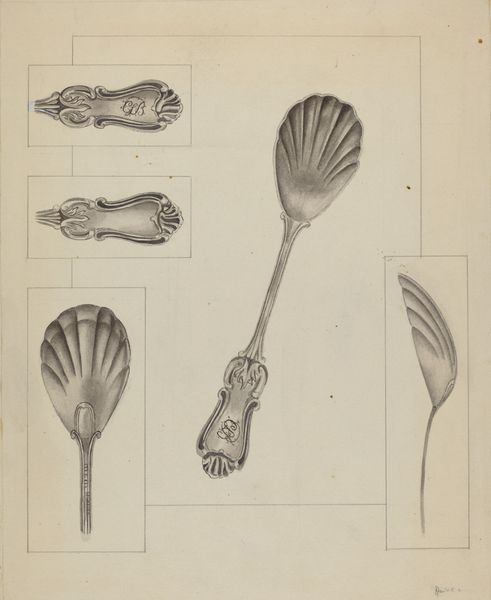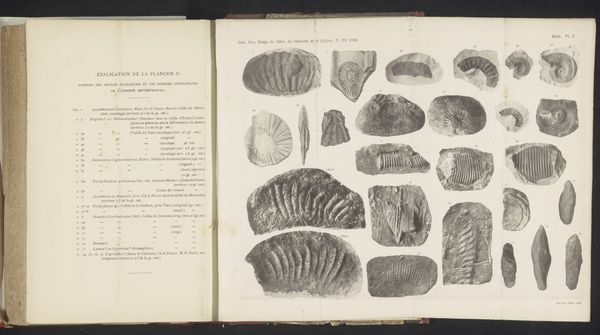
drawing, pencil
#
drawing
#
pencil drawing
#
geometric
#
pencil
#
sketchbook drawing
#
realism
Dimensions: overall: 30.7 x 23 cm (12 1/16 x 9 1/16 in.)
Copyright: National Gallery of Art: CC0 1.0
Curator: Immediately, I'm drawn to its organic yet functional appearance. It seems both natural and designed. Editor: We're looking at Francis Law Durand's "Oyster Shaped Flask", dating to around 1936. It’s rendered in pencil, a detailed study showing the object from multiple angles. Curator: The choice of pencil for something mimicking industrial design is interesting. Was Durand perhaps questioning the stark lines of industrial aesthetics? It looks like a study of surface and form more than a blueprint. The layering suggests an intimate handling of material transformation, like a craft object elevated through fine art representation. Editor: Considering its time, this design reflects the broader anxieties surrounding industrial production. It may respond to the dominant Bauhaus aesthetic popular at the time. Objects for use, even flasks, don’t exist in a vacuum, of course. It presents a cultural and societal viewpoint, suggesting that, maybe, a useful object may also be beautiful, inspired by nature. How would an oyster flask change how we socialize, do you suppose? Curator: Right, its location changes everything. I imagine holding it and thinking of its origins in the ocean, and the tradition of harvest. Does it evoke more thoughtful imbibing in nature rather than a mere utilitarian function of consuming. It elevates, perhaps ironically, what it contains. The texture created using the pencil work is marvelous, really. Editor: Absolutely. The act of taking out this flask and having a sip surely speaks to a certain refinement of culture, even protest. But, this only exist today, in the form of a drawing. It's also crucial to acknowledge how artists of the era were employed to think about designs that, perhaps, could have offered beauty as mass consumption rose. Curator: Precisely. I've focused intently on process here, looking at it not just as an image but as a record of labor, but now seeing the context around social commentary changes its perceived message too. Editor: The dialogue between natural form and industrial purpose continues to be culturally pertinent, urging critical thought. Curator: Exactly. By carefully examining this object’s origins and means of creation, we arrive at deeper insights, transcending form and technique.
Comments
No comments
Be the first to comment and join the conversation on the ultimate creative platform.
